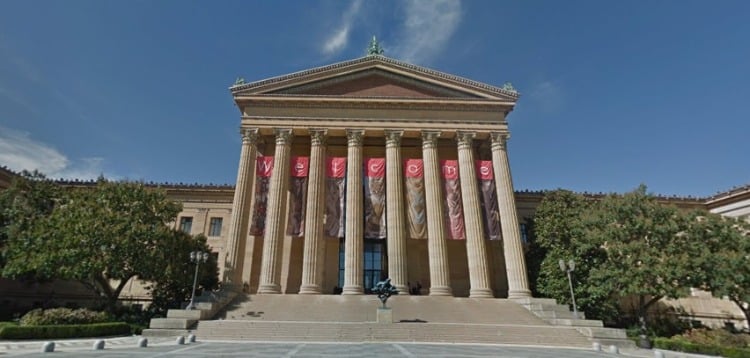This short blog post detailing the history of the city’s landmark is brought to you by the Philadelphia personal injury attorneys of LBK.
The Philadelphia Museum of Art, which was previously known as the Pennsylvania Museum and School of Industrial Art, is an art museum of international renown located in Fairmount Park exactly at 2600 Benjamin Franklin Pkwy. The Philly MoA is surrounded by many other popular arts centers, but nevertheless it stands on its own as a famed attraction likely at the top of all tourists’ lists when they visit the “City of Brotherly Love”.
Also included under the auspices of the Philadelphia Museum of Art are the city’s Rodin Museum and historic houses Mount Pleasant, an 18th-century Georgian home, and Cedar Grove, an early 20th-century residence.
The Centennial Exhibition of 1876
The Museum began as a legacy of the great Centennial Exhibition of 1876, held in Fairmount Park. At the conclusion of the celebrations, Memorial Hall–which had been constructed as the Exhibition’s art gallery– remained open from 1877 onward as the Pennsylvania Museum and School of Industrial Art “for the improvement and enjoyment of the people of the Commonwealth”.
In the first few decades, the collections consisted of objects of an industrial nature, as well as fine and decorative art objects such as European ceramics. Books were also among the Museum’s earliest acquisitions, as were antique furniture, enamels, carved ivories, jewelry, metalwork, glass, pottery, porcelain, textiles, and paintings.
The institution’s first curatorial departments were established in 1893: textiles, lace and embroidery, numismatics, and pottery. With the ever-increasing flow of visitors, the museum soon grew out of Memorial Hall. In the early 1900s, the Museum published its first collection handbook and initiated an Education program for the general public. It wasn’t long before a Membership program was in place, and plans for a new building gained momentum in the following decade.
Although a new building was proposed in 1894, plans were not finalized until 1917, and the building opened its doors to the public only in 1928. Its interior was not completed until nearly three decades later.
Director Fiske Kimball set the tone for a new era in the 1920s, and the opening of the new building on Fairmount–what is now the Main Building–opened with an attendance record of one million visitors in its first year. Valiant marketing efforts and the skillful leadership of President J. Stogdell Stokes helped to keep the Museum vital during the Great Depression of the 1930s, while the 1940s witnessed extraordinary growth in the collections with a number of important gifts–including the John D. McIlhenny Collection and the George Grey Barnard Collection.
Acquisitions of the 1950s, such as the Louise and Walter Arensberg Collection and the A.E. Gallatin Collection, assured the Museum’s prominence as a place in which to see masterpieces of early modern art. A number of period rooms were opened to the public as well, and the decade even saw the gift of Grace Kelly’s wedding dress following her royal 1956 wedding to Prince Rainier III of Monaco.
The 1980s witnessed still more growth, and, during the 1990s, the Museum made great technological strides as it prepared to leap into the 21st century. As the millennium came around, the Museum transitioned with ease and continued to navigate the changes that the first decade would bring with grace and strength. Now, with an astonishing history behind it, the Philadelphia Museum of Art is poised to meet the decades to come as one of the nation’s foremost destinations in which to see world-class art.
Our Local Office
Victims of accidents and injuries can count on the Philadelphia personal injury attorneys of LBK to defend their rights and fight for their dserved compensation in a court of law.

